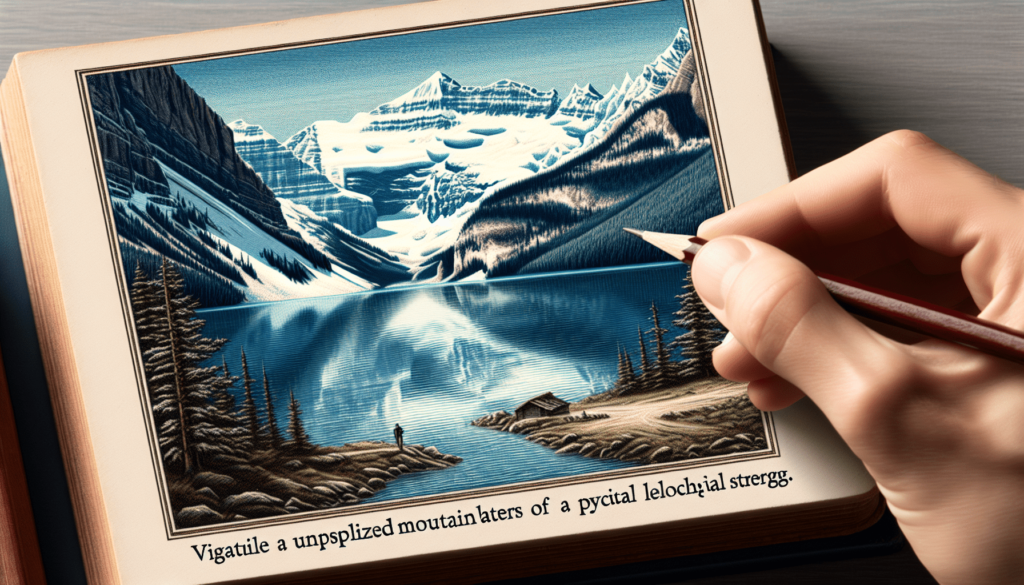Welcome to the intriguing world of cold plunges! Many people wonder if stepping into icy cold water can actually help them burn calories. The answer might surprise you – yes, it can! When you subject your body to cold temperatures, it has to work harder to maintain its core temperature, leading to an increase in calorie expenditure. So the next time you take a dip in a chilly pool or lake, rest assured that you’re not only refreshing your mind and body, but also potentially torching some extra calories in the process. Keep reading to learn more about the science behind this unique form of calorie burning. Do You Burn Calories In A Cold Plunge?
Do you ever wonder if taking a cold plunge can help you burn calories? You might be surprised to learn that this icy experience can actually have a significant impact on your metabolism. Let’s dive into the science behind cold plunges and how they can affect your calorie burning process.
Understanding Caloric Expenditure
Before we delve into the specific effects of cold plunges on burning calories, it’s essential to understand the concept of caloric expenditure. Your body burns calories every day to support vital functions such as breathing, circulating blood, and digesting food. Additionally, physical activity and exercise contribute to the total number of calories your body burns. By increasing your caloric expenditure, you can create a calorie deficit, which is crucial for weight loss and maintenance.
Factors Affecting Calorie Burn
Numerous factors influence the number of calories your body burns, including age, weight, sex, muscle mass, metabolic rate, and activity level. All these variables play a role in determining your total daily energy expenditure (TDEE). Understanding these factors can help you make informed decisions about your health and fitness goals.
The Science Behind Cold Plunges
When you expose your body to cold temperatures, it reacts by activating a process known as thermogenesis. Thermogenesis is the body’s way of generating heat to maintain its core temperature. During a cold plunge, your body must work harder to stay warm, leading to an increase in energy expenditure. As a result, you burn more calories to produce the heat needed to keep you warm in cold water.
Brown Adipose Tissue Activation
One of the key mechanisms involved in calorie burning during a cold plunge is the activation of brown adipose tissue (BAT). Unlike white fat, which stores energy, brown fat generates heat by burning calories. When exposed to cold temperatures, brown fat becomes more active and plays a significant role in thermogenesis. This process not only helps you stay warm but also contributes to increased calorie expenditure.

How Many Calories Can You Burn?
The number of calories burned during a cold plunge can vary based on several factors, including water temperature, duration of exposure, and individual characteristics. Research suggests that spending time in cold water can increase energy expenditure significantly. According to a study published in the Journal of Clinical Investigation, exposure to mild cold temperatures (around 19 degrees Celsius) can lead to a 30-40% increase in metabolic rate.
Caloric Expenditure in Cold Water
To give you a better idea of the number of calories you can burn during a cold plunge, let’s consider an example. For a 154-pound person, spending 30 minutes in 60-degree water could result in burning approximately 400-500 calories. However, it’s crucial to note that these numbers are estimates, and individual results may vary.
Maximizing Calorie Burn in a Cold Plunge
If you’re looking to maximize the number of calories burned during a cold plunge, there are several strategies you can implement. By combining the benefits of cold exposure with other calorie-burning methods, you can achieve optimal results and support your health and fitness goals.
Interval Training in Cold Water
One effective way to boost your calorie burn during a cold plunge is by incorporating interval training. Alternating between periods of high-intensity exercise and rest can elevate your heart rate and energy expenditure. You can perform exercises such as swimming, jumping jacks, or high knees in between intervals of immersing yourself in cold water. This combination of cold exposure and physical activity can enhance caloric burn and improve your overall fitness.
Cold Plunge After Exercise
Taking a cold plunge after a workout can also be beneficial for enhancing calorie burn. After physical activity, your body’s metabolic rate remains elevated, making it more efficient at burning calories. Immersing yourself in cold water post-exercise can further stimulate thermogenesis and increase energy expenditure. Additionally, cold exposure can aid in muscle recovery and reduce inflammation, promoting overall recovery and performance.
Stay Hydrated and Nourished
Hydration and proper nutrition play a crucial role in supporting your body’s ability to burn calories effectively. When engaging in cold plunges, it’s essential to stay hydrated and replenish your body with nutrients to support energy production. Drinking water before and after a cold plunge can help regulate your body temperature and maintain optimal hydration levels. Additionally, consuming nutrient-dense foods rich in vitamins, minerals, and antioxidants can enhance your metabolism and overall well-being.

Safety Precautions and Considerations
While cold plunges offer various benefits, it’s essential to take precautions and consider certain factors to ensure a safe and enjoyable experience. Cold exposure can be stressful on the body, particularly if not done properly. By following these safety guidelines, you can minimize risks and maximize the positive effects of cold plunges.
Gradual Acclimation
If you’re new to cold plunges, it’s crucial to acclimate your body to low temperatures gradually. Start with shorter exposure times and gradually increase the duration as your body adapts. Cold shock can be dangerous, so it’s essential to listen to your body and pay attention to any signs of discomfort or distress.
Proper Hydration
Maintaining proper hydration is key when engaging in cold plunges. Cold water can cause vasoconstriction, leading to increased blood pressure and heart rate. By staying hydrated, you can support optimal circulation and help your body regulate its core temperature effectively. Be sure to drink water before and after a cold plunge to prevent dehydration and support overall well-being.
Monitor Body Temperature
During a cold plunge, it’s essential to monitor your body temperature and signs of hypothermia. Hypothermia can occur when your body loses heat faster than it can produce it, leading to potentially dangerous health complications. If you experience symptoms such as shivering, confusion, or numbness, exit the cold water immediately and seek warmth to prevent further heat loss.
Consult a Healthcare Professional
Before incorporating cold plunges into your wellness routine, consider consulting with a healthcare professional, especially if you have underlying health conditions. Individuals with cardiovascular issues, respiratory disorders, or circulatory problems should exercise caution when exposing themselves to cold temperatures. A medical professional can provide guidance on the safety and suitability of cold plunges based on your individual health status.
Conclusion
In conclusion, cold plunges can be an effective way to burn calories and support your overall health and well-being. By harnessing the power of cold exposure and thermogenesis, you can boost your metabolism, increase energy expenditure, and stimulate brown fat activation. Incorporating cold plunges into your fitness routine, along with proper hydration and nutrition, can help you achieve your weight loss and wellness goals. Remember to prioritize safety, listen to your body, and consult with a healthcare provider if you have any concerns or medical conditions. Embrace the cold and reap the benefits of this invigorating experience on your journey to better health.

